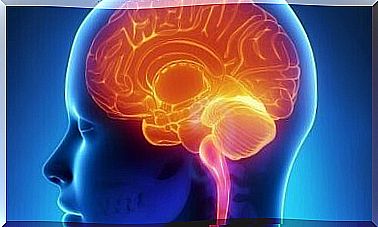Emotional Lability: Symptoms, Causes And Treatment
Some people have a tendency to change their moods in short periods of time. This is known as emotional or affective lability. This condition is not related to bipolarity, nor is it necessarily associated with any psychological disorder. Still, it is convenient to know more about it.
When emotions last for a short time and mood swings occur for no apparent reason, we can establish that it is emotional lability. This could happen to anyone and the causes are varied. In this article we will see what it is about and how it is treated.
What is emotional lability?
Emotional or affective lability is the sudden variation between moods in a person. This pattern of mood swings is also known as “pseudobulbar syndrome.” It is an abnormal behavior in the way of managing one’s own emotions.
Although it is not considered as such a pathology, it includes an alteration that can cause important complications to those who present it. Constantly changing your mood makes it difficult to establish lasting, healthy bonds with other people.
The time it takes for people to change from one mood to another can be short or long, but there are no changes between manic and depressive states, as occurs in bipolarity. Also, mood swings occur long before 6 months; and in later cases they could occur within hours.

What are the symptoms of emotional lability?
It is important to know the characteristic symptoms of emotional lability, so that we are able to recognize it in ourselves and in others. Below we will see a list of the most characteristic indicators:
- Feeling of intense and uncontrollable irritability.
- Crying easy and that occurs without being clear about the reasons.
- Uncontrollable laughter that could appear at inopportune times.
- Low tolerance for frustration.
- Ongoing difficulty falling asleep during the night hours.
- Heightened optimism that usually lasts for a short time. During these moments, the subject is euphoric and with an irrationally positive vision regarding any situation.
- General pessimism about any situation. It can manifest itself together with attacks of anger, exhaustion or affective flattening.
- Feeling of insecurity when making simple decisions.
Causes and risk factors
Emotional lability is caused by various factors; from dysfunctional parenting styles during childhood to biological factors. For example, a subject could have sudden and rapid mood swings if from a young age he is taught that he can always get what he wants.
Parents who overprotect their children and consent to everything end up limiting them. These children will grow up to be adults with a very low tolerance level when things don’t go their way.
On the other hand, we could also find people who show irrational changes in their mood due to organic causes. This would be the case of subjects with alterations or lesions in the prefrontal lobe of the brain. This structure is responsible for regulating the most primitive impulses of human beings.
In the same vein, there are some risk factors that can increase the probability of affective lability in people. Let’s see in detail what these situations can be.
- For experiencing elevated stress levels for a long time. This could happen from being overloaded with work, or having too many family responsibilities and not delegating functions in any area. Thus, it is natural for mood swings to occur during times of stress.
- As a result of an accident that causes an injury to the skull, so that the areas of the brain involved in the regulation of emotions are affected.
- The presence of some disorders can cause pseudobulbar syndrome. This is the case of anxiety, cyclothymia, depression, among others.
Treatment of emotional lability
To establish the best treatment, it is necessary to know the intensity and prevalence of pseudobulbar syndrome. Therefore, it will be essential to attend with a trained professional who can perform an adequate evaluation. In general, psychological or pharmacological treatment is usually used, as the case may be. Let’s see.
1. Pharmacological treatment
Only in the most intense cases, when psychological treatment fails to give the expected results, the use of drugs is suggested. The natural way for this to happen is for the psychologist to refer the patient to a psychiatrist so that he can make a new evaluation and, based on this, prescribe the medications.
2. Psychological treatment
This treatment is based on the acquisition of resources that serve to face those problematic situations from a behavioral perspective. Several sessions are necessary with a therapist, who will use the best methods so that the person can find solutions. Cognitive behavioral therapy is effective in this case.
Regardless of the current of the psychologist, it is important that the process is responsible for addressing certain aspects. As a first point, it should be learning to manage emotions. On this basis, the patient will be able to recognize those situations that cause discomfort.
There are a number of relaxation techniques that can significantly help people connect better with their own emotions; especially those that are based on breathing.
As a third pillar are social skills. It is necessary to train the person in the ways of relating to others. In this way, you avoid falling into dysfunctional relationships that, in the long run, can cause you frustration.

Mood swings aren’t always a problem
Having reached this point, we can understand how sudden and irrational mood swings affect people’s lives. However, it is important to note that when there are reasons for an emotional change to occur, the healthiest thing to do is to experience it. We should not deny our emotions, even though they are unpleasant.
As we learn to deal with what makes us sad or moody, the better we can react to these situations. The idea is not to run away from mood swings, but to understand and deal with them appropriately.









